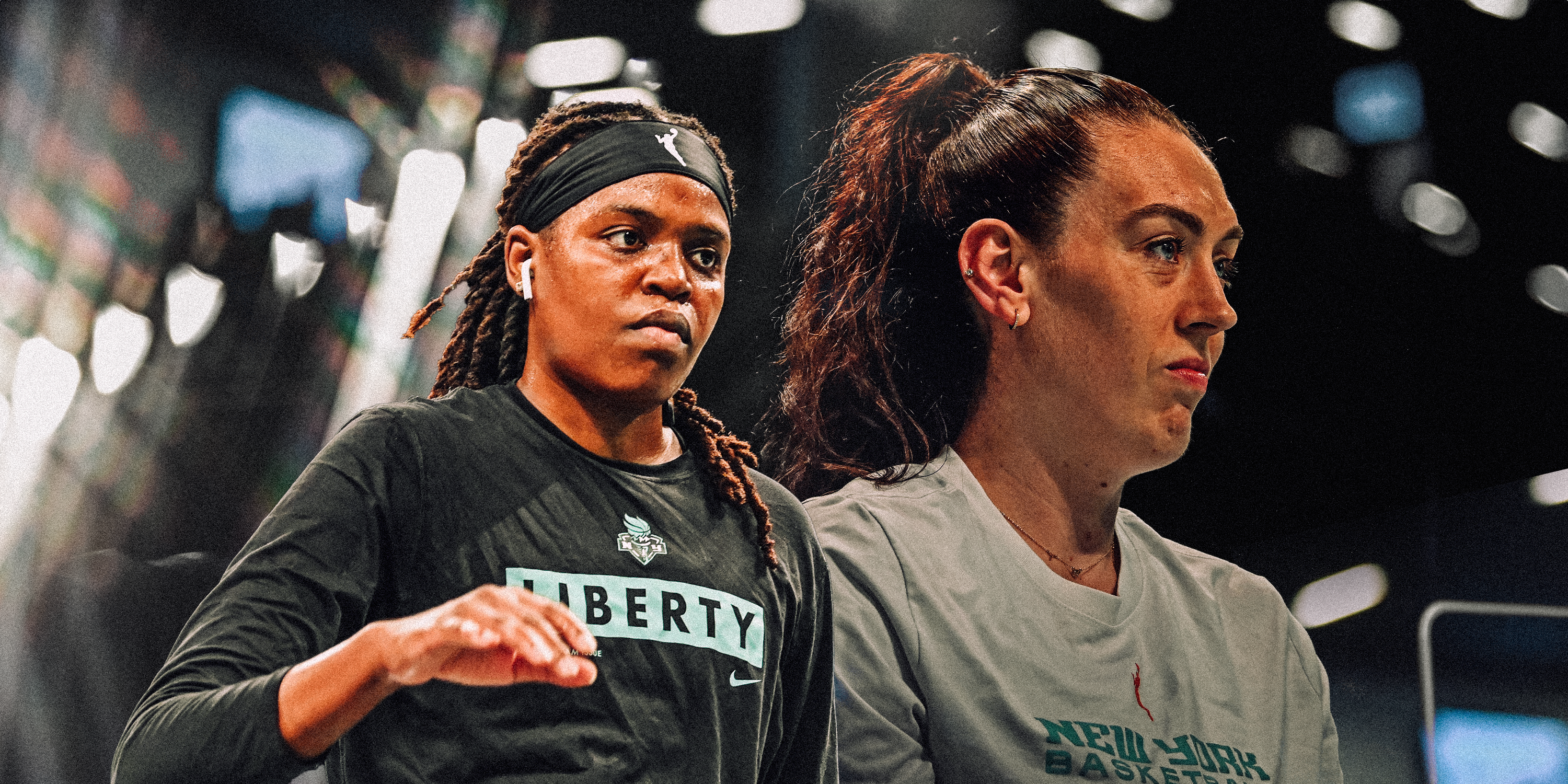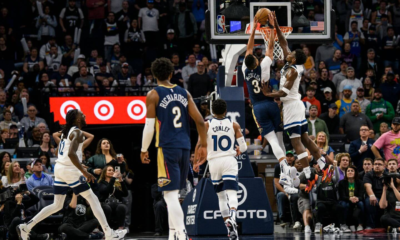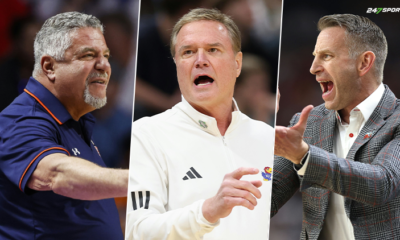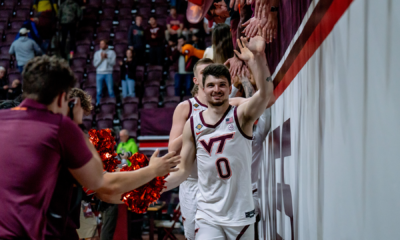Sports
Is WNBA headed for super-team era after success of Las Vegas Aces and New York Liberty? – The Athletic

WNBA
At times, the WNBA regular season felt like an extended opening act for a destined finals matchup between the Las Vegas Aces and the New York Liberty. Fans – and the league itself – have been eagerly anticipating this series. Aces guard Kelsey Plum went so far as to call the meeting “inevitable.”
The pairing of two big markets in the finals with so many bankable stars on the court is a huge win for the WNBA, as the Aces lead the series 2-1 heading into Wednesday’s Game 4 in New York. The Aces have been part of transforming Las Vegas into a sports town, drawing huge crowds at home and on the road. The Liberty have also turned their home games into destination events in Brooklyn, revitalizing what had been a moribund franchise.
GO DEEPER
The place to be in Las Vegas? Aces games, of course. Game 1 of the WNBA Finals proved popular
The buzz around this matchup, even if it felt pre-ordained, is good for business in 2023, and the birth of the rivalry should be a positive in the immediate future. But the consolidation of talent on the Aces and Liberty to this degree poses some questions about what player movement could look like in the WNBA going forward as other teams and players observe the Liberty and Aces’ success.
Advertisement
The loosened restrictions on free agency in the current collective bargaining agreement makes it possible for players to choose their destinations. Although four of the starters in this series were drafted by their respective teams, each of them signed subsequent extensions to remain there. Five of the starters (plus Candace Parker, Alysha Clark and Stefanie Dolson off the benches) chose to go to Las Vegas and New York as free agents.
It’s clear what has drawn players to these locations. Yes, the Aces and Liberty play in big markets, but they also have ownership groups with deep pockets and a commitment to investment in their organizations. Mark Davis built a dedicated training facility for the Aces, and Joe and Clara Wu Tsai assembled the biggest performance staff in the league, among many other amenities that the owners have provided for their teams.
In previous generations, players changed locations to seek out winning situations; Sylvia Fowles left Chicago to play with the dynastic Minnesota Lynx, and Tina Charles demanded a trade to the Mystics when the Liberty were struggling. Other players have asked to move closer to home, like Elena Delle Donne leaving Chicago for Washington. But now, it seems like the majority is searching for the highest quality player experience.
“I think eventually things will play out so that if you don’t get on par with New York and Vegas on how you treat your players, you’re just not gonna get free agents,” Aces coach Becky Hammon said.
Phoenix announced the construction of a Mercury-specific practice facility last week. Seattle broke ground on its own facility earlier in the year, while the Sky have been searching for a new practice location. The Fever already have their own space, and the Lynx, Mystics and Liberty have high-quality shared facilities, all benefiting from partnerships with NBA teams in their cities.
Advertisement
The player experience arms race is extending to the league’s expansion process. The Bay Area team will be owned by Joe Lacob and Peter Guber, the governors of the Golden State Warriors. They’re billionaires who revolutionized the operations of their NBA franchise, and their WNBA team is already guaranteed to have a world-class arena and practice facility. Assuming the league continues to choose ownership groups in a similar tax bracket for expansion teams, players will have more options that fit their preferences in free agency.
GO DEEPER
WNBA’s Bay Area expansion team to start in 2025
Liberty guard Courtney Vandersloot spoke about how new teams’ clean slates could prove attractive to players, similar to how the changing of the guard in Las Vegas (Davis bought the team in 2021) and New York (the Tsais purchased the Liberty in 2019) impacted those franchises in recent years.
“It’s like, look at our shiny new stuff that we have,” Vandersloot said. “They’re saying the right things, how they want to grow the game and they’re gonna commit to spending honestly. It’s a great opportunity for them to build from the ground up. We can start right away.”
That attitude should scare teams that aren’t prepared to compete. Players have never hesitated to exercise their individual agency in the WNBA. They have sat out – think of Diana Taurasi taking a full season off in her prime, a year after winning a league title, because her former offseason team in Russia, UMMC Ekaterinburg, paid her to – and engineered trade demands before free agency was a real option. Player empowerment may be a recent topic in the NBA, but the women have been down this path for a long time; the way they’ve utilized that power recently suggests that parity is going to be more difficult than ever to maintain in the WNBA.
Based on the offseasons the Aces and the Liberty just had, the league likely needs to expand to more big markets and have more committed owners in those markets, as a measure against the consolidation of talent. The competitive balance measures that the league has instituted had no effect on the assembling of these two super-teams. Players took discounts to sign or extend contracts in Las Vegas or New York, knowing that the postseason bonuses (or Commissioner’s Cup payout) along with more endorsements would supplement that income. Jonquel Jones said she made more money off the court in one season with the Liberty than she did in seven years in Connecticut.
Advertisement
Perhaps players made those sacrifices to suit up next to generational talents like A’ja Wilson and Breanna Stewart, but keep an eye on Indiana and Atlanta in future offseasons to see if Aliyah Boston and Rhyne Howard are enough to lure free agents to non-glamour markets.
The salary changes that came in the 2020 collective bargaining agreement should make keeping a super-team together challenging. For example, the 2010s-era Lynx could pay each of their Hall of Fame starters a max contract, but that’s impossible under the current CBA. However, watching members of the Aces’ core four repeatedly sign below-market extensions reveals that the highest-possible salary alone isn’t what players desire.
Betnijah Laney would have commanded a maximum salary in free agency but instead came back to New York. Kayla Thornton would have been recruited heavily and given a bigger role on a different team, but she instead stayed with the Liberty. Time and again, when great players land in Las Vegas and New York, they’re choosing to stick around.
Maybe the 2023 offseason is an inflection point for the WNBA, a signal to the rest of the league that it needs to step up to meet the gauntlet laid down by these two marquee franchises. Or it could be a blip like the NBA’s 2019 offseason, when players forced their way to large markets en masse (like Paul George and Kawhi Leonard to Los Angeles and Kevin Durant and Kyrie Irving to New York) and discovered that playing in a big city didn’t address all of their concerns.
However the rest of the WNBA interprets this moment, this probably isn’t the last time the Aces and Liberty will meet up on the game’s biggest stage. The league hasn’t yet figured out how to dissuade super-team team-ups, short of spreading out the talent pool via expansion, which means the WNBA’s other teams will have to evaluate their practices — or even sell — to reverse this trend.
“You want to have ownership groups who want to be here and invest and help this league grow and be better than it’s ever been,” Alysha Clark said. “And those that don’t want to do that, I hope this helps weed them out.”
GO DEEPER
Trotter: Becky Hammon was built for the championship moment, just like her players
(Illustration: Eamonn Dalton / The Athletic; Photos of Jonquel Jones, left, and Breanna Stewart: Mike Lawrence / NBAE via Getty Images)
Subscribe to The Athletic for in-depth coverage of your favorite players, teams, leagues and clubs. Try a week on us.
Sabreena Merchant is a women’s basketball Staff Writer for The Athletic. She previously covered the WNBA and NBA for SB Nation. Sabreena is an alum of Duke University, where she wrote for the independent student newspaper, The Chronicle. She is based in Los Angeles. Follow Sabreena on Twitter @sabreenajm








